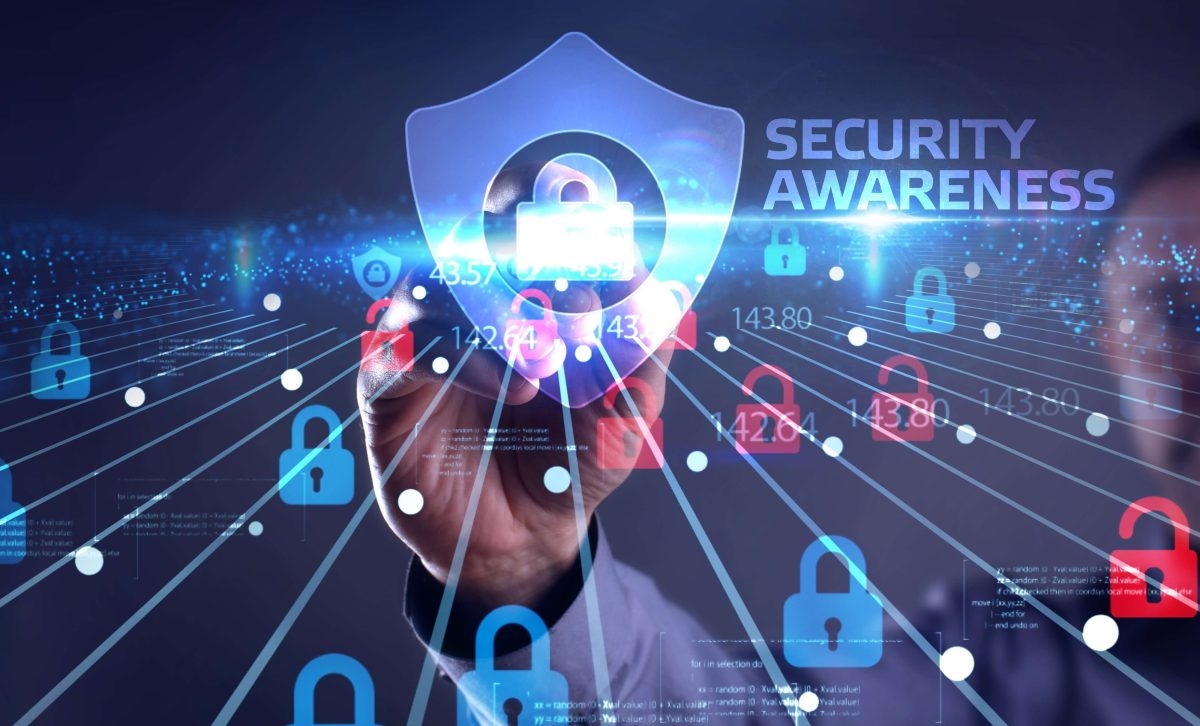Top 11 Elements Ensuring IT Compliance and Security

In the modern digital landscape, ensuring robust IT compliance and security is crucial for businesses of all sizes. From small enterprises to large corporations, safeguarding sensitive data is more important than ever. With evolving regulations, such as GDPR, businesses in the UK must ensure they comply with stringent data protection laws while also protecting their infrastructure against cyber threats.
This blog will walk through the top 11 elements that are essential for IT compliance and security. It will also offer actionable advice on how businesses can implement these measures, emphasising the importance of managed IT services security and IT support for small businesses.
Why IT Compliance and Security Matter
Businesses today face constant cyber threats and ever-tightening regulations. IT compliance and security are not just about avoiding penalties—they are integral to safeguarding a company’s reputation, financial stability, and customer trust. Non-compliance can result in hefty fines, legal issues, and a loss of consumer confidence. Additionally, a data breach could have lasting effects on a company’s operations, with recovery costs often exceeding millions of pounds.
Moreover, staying ahead of security threats and maintaining compliance is not a one-time task but a continuous process that requires proactive measures and ongoing efforts.
1. Data Encryption: Protecting Sensitive Information
Data encryption is one of the most effective ways to secure sensitive information. Encryption transforms readable data into an unreadable format unless the correct decryption key is used. This measure ensures that even if data is intercepted, it cannot be read or misused by unauthorized parties.
Why It's Crucial:
Encryption is essential for compliance with regulations like GDPR, which mandates the protection of personal data. By encrypting data, businesses ensure that sensitive information remains secure in case of a data breach.
Implementation:
- Encrypt data both at rest (stored data) and in transit (data being transmitted).
- Use strong encryption algorithms and ensure encryption keys are regularly updated.
2. Access Control and Authentication Measures
Access control ensures that only authorized users can access critical systems and sensitive information. Multi-factor authentication (MFA) significantly strengthens access control by requiring multiple forms of verification before granting access.
Why It's Crucial:
Without proper access controls, your systems could be vulnerable to insider threats or external breaches. In addition to MFA, strong password policies are essential to prevent unauthorized access.
Implementation:
- Use MFA for all employees accessing sensitive data.
- Regularly review employee roles and ensure that access is restricted based on the principle of least privilege.
3. Regular Software Updates and Patches
Cybercriminals are constantly looking for vulnerabilities in software. Software updates and patches are released to fix these vulnerabilities and ensure that your systems remain secure. Outdated systems are more likely to be exploited by attackers, putting your data and business at risk.
Why It's Crucial:
Failure to keep software up to date could leave systems exposed to threats. Regular patch management is critical to reducing vulnerabilities.
Implementation:
- Set up automatic updates for critical software.
- Perform regular manual checks to ensure all systems are fully patched.
4. Employee Awareness and Cybersecurity Training
Human error is often the weakest link in cybersecurity. Staff members who are not well-informed about the latest security threats may inadvertently fall for phishing attacks or mishandle sensitive data. Regular employee training is crucial to create a security-conscious workforce.
Why It's Crucial:
Training helps employees understand the risks they face and equips them to take proactive measures to prevent breaches. It also helps businesses comply with data protection regulations by ensuring employees handle data securely.
Implementation:
- Provide regular cybersecurity training sessions for employees.
- Use simulated phishing campaigns to test staff and raise awareness.
Managed IT services security often provides the necessary tools and expertise to help ensure employees receive the best possible training and security awareness resources.
5. Risk Assessment and Mitigation
Risk assessments help businesses identify potential security threats and vulnerabilities within their systems. Conducting regular risk assessments enables businesses to prioritize resources and implement the necessary controls to mitigate these risks.
Why It's Crucial:
A proactive approach to risk management helps businesses stay ahead of threats, preventing attacks before they can cause significant damage.
Implementation:
- Conduct regular risk assessments to evaluate potential vulnerabilities.
- Implement risk mitigation strategies based on the results of the assessment.
6. Data Backup and Recovery Plans
A robust data backup strategy ensures that critical business data is regularly backed up and can be restored in case of a disaster. Whether due to hardware failure, ransomware, or accidental deletion, data loss can severely impact business operations.
Why It's Crucial:
In addition to providing business continuity, backup and recovery plans are also essential for compliance with data protection laws, ensuring data can be restored if needed.
Implementation:
- Regularly backup data to secure offsite locations or cloud storage.
- Test recovery procedures periodically to ensure quick data restoration.
7. Network Security and Monitoring
Network security includes measures such as firewalls, intrusion detection systems (IDS), and secure VPNs to protect a business's internal network from external threats. Continuous monitoring of network activity helps detect any suspicious behaviour that may indicate an ongoing attack.
Why It's Crucial:
Effective network security reduces the risk of cyber-attacks and ensures that critical systems remain protected from unauthorized access or malware.
Implementation:
- Use firewalls, IDS, and VPNs to secure your network.
- Implement 24/7 network monitoring to identify potential threats in real-time.
IT support small businessescan provide the tools and resources needed to implement these network security measures effectively.
8. Cloud Security
As more businesses move their operations to the cloud, securing cloud-stored data has become essential. Cloud security involves a set of tools, policies, and practices designed to protect data, applications, and services that are hosted on cloud platforms.
Why It’s Critical:
With the rise of cloud adoption, protecting data stored in the cloud is crucial to ensure business continuity, maintain regulatory compliance, and safeguard sensitive information. Cloud security helps to prevent unauthorized access, data breaches, and other threats that could compromise valuable business assets.

Implementation:
- Make sure all cloud-based services adhere to relevant security and compliance standards.
- Implement encryption and secure access controls to protect data stored in the cloud from potential breaches.
9. Compliance with Privacy Regulations
In the UK, organisations are required to comply with data protection laws, such as the GDPR, which dictate how businesses handle, store, and process personal data. Adhering to these regulations not only helps businesses avoid hefty fines but also reinforces customer trust and confidence in their commitment to data protection.
Why It’s Critical:
Non-compliance with privacy regulations can lead to severe penalties, including fines and reputational damage. Understanding and following relevant data protection laws is essential for maintaining a responsible approach to handling personal information.
Implementation:
- Regularly review and update privacy policies to remain compliant with evolving regulations like GDPR.
- Conduct audits to ensure that all data handling practices align with required regulatory standards.
10. Incident Response Plan
An incident response plan is a strategic framework that outlines the steps an organisation should take when a security or data breach occurs. A clear and well-documented incident response plan helps businesses mitigate damage, contain threats, and recover from attacks swiftly.
Why It’s Critical:
A quick, organised response to security incidents can significantly reduce the impact of a breach. By acting swiftly, businesses can minimise data loss, maintain customer trust, and ensure a faster recovery.
Implementation:
- Develop a comprehensive incident response plan that includes clear procedures for identifying, containing, and recovering from breaches.
- Regularly test the plan using tabletop exercises to ensure readiness and improve response times in a real-world scenario.
11. Third-Party Vendor Risk Management
When working with third-party vendors, it's essential to assess their security practices to ensure they meet the same compliance and security standards your organisation adheres to. A robust third-party risk management strategy helps mitigate the potential vulnerabilities introduced through external partners.
Why It’s Critical:
Third-party vendors can pose significant security risks if they don’t follow adequate security practices. Without proper assessment and monitoring, external partners could unintentionally introduce vulnerabilities that lead to data breaches or regulatory non-compliance.
Implementation:
- Regularly evaluate and assess the security measures of third-party vendors to ensure they meet your organisation’s security standards.
- Include security and compliance requirements in vendor contracts to enforce accountability and minimise the risk of breaches.
Conclusion
IT compliance and security is an ongoing process that requires continuous effort, investment, and vigilance. By focusing on the 11 key elements—such as encryption, employee training, risk management, and third-party evaluations—organisations can build a strong security framework that both protects sensitive data and meets compliance standards.
For businesses, particularly small enterprises, leveraging managed IT services security and IT support for small businesses can ensure the proper implementation of these security measures. By partnering with experts, organisations can maintain robust IT infrastructures and stay ahead of emerging cyber threats. Renaissance Computer Services Limited offers expert IT solutions that help businesses stay secure, compliant, and resilient in a constantly evolving digital landscape.
- Art
- Causes
- Crafts
- Dance
- Drinks
- Film
- Fitness
- Food
- Juegos
- Gardening
- Health
- Home
- Literature
- Music
- Networking
- Other
- Party
- Religion
- Shopping
- Sports
- Theater
- Wellness


